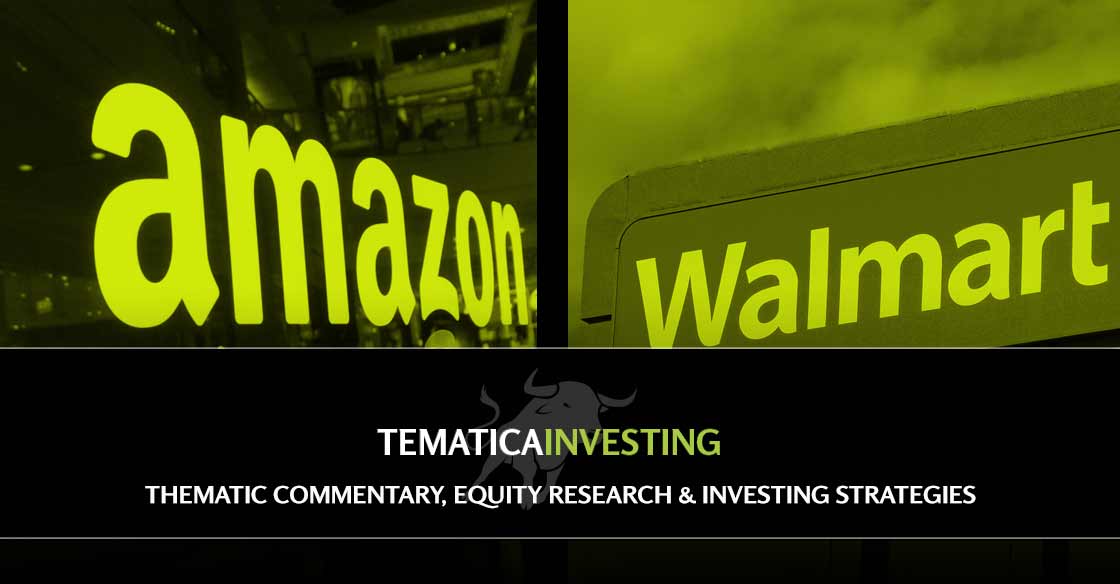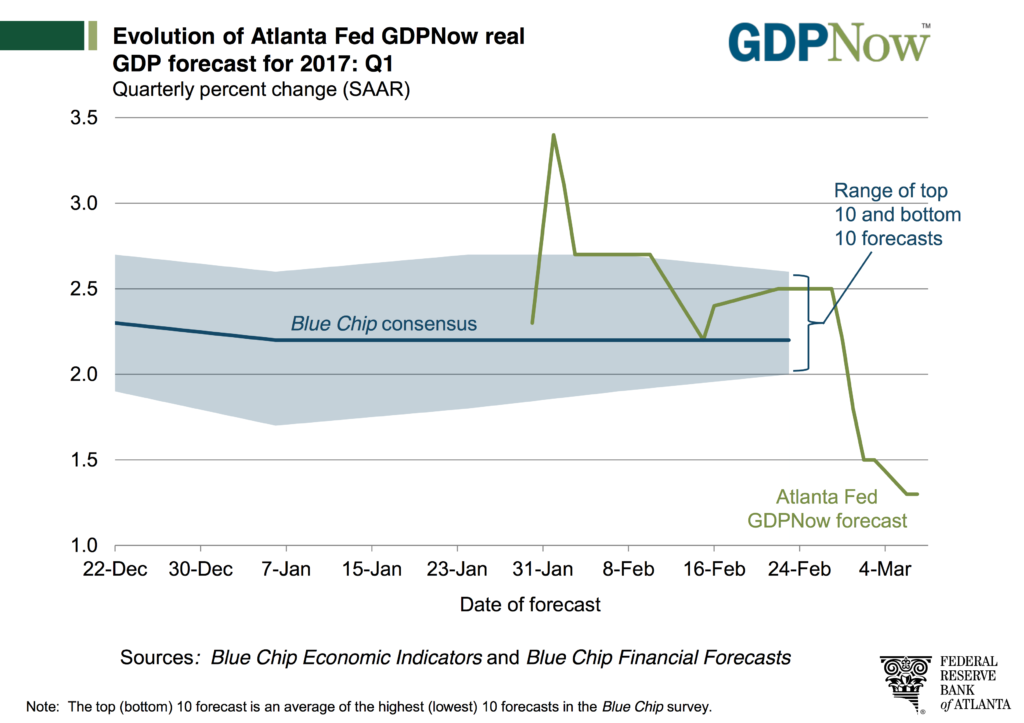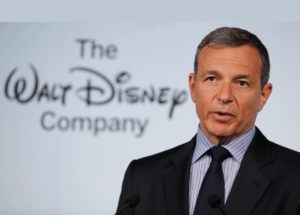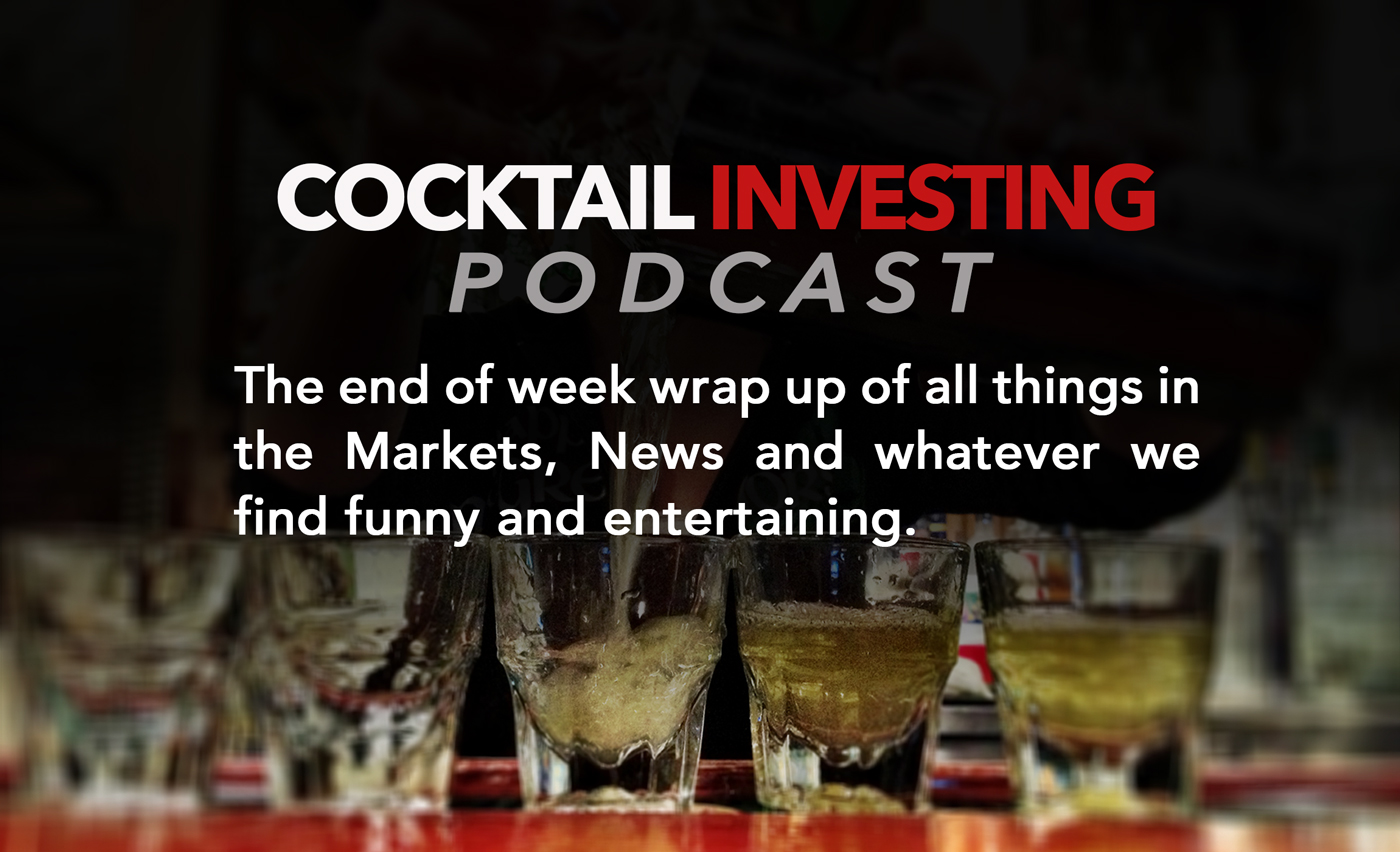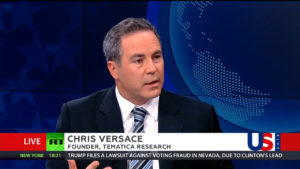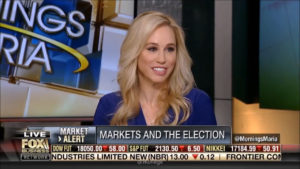No Sleepy End of Summer in Sight
We’ve survived the eclipse, and while the display was a bit underwhelming outside of the Beltway, we hope you enjoyed this rare experience that pulled 10 percent of US viewers away from Netflix while it was happening. Rest assured the consumers of streaming content that help power our Connected Society investing theme were back on board soon thereafter propelling Marvel’s The Defenders to a binge viewing pop after dropping last Friday. From time to time we may see speed bumps for our Connected Society investing theme, but much like trying to put toothpaste back into the tube, we don’t see a reversal in this tailwind or any other of those associated with our investing themes anytime soon.
If anything, as we break down the monthly retail sales data, examine data points such as the box office take and maneuverings by companies like Target (TGT) and Wal-Mart (WMT), we see that Connected Society tailwind blowing even harder as we head into the 2017 holiday shopping season. This morning it was shared that Wal-Mart is teaming with Alphabet (GOOGL) to bring Wal-Mart products to people who shop on Google Express, Google’s online shopping mall. What’s significant about this news is that it marks the first time Wal-Mart has made its products available in the U.S. on a website other than its own. Also, too, Wal-Mart is embracing aspects of our Disruptive Technology theme as it makes it products available to customers via Google Home (Google’s answer to Amazon’s Echo) as well as Google Assistant, its artificial intelligence software assistant found in smartphones powered by Google’s Android software.
Clearly, Wal-Mart is shoring up its position and investing for where retail continues to head — a path that is increasingly chartered by the Connected Society. To us, this development, along with Nike’s (NKE) recent teaming with Amazon (AMZN), is a clear signal of what’s happening in retail. It also says that lines are being drawn between those partnered with Amazon and those that aren’t. We suspect many will see this as evidence of the “retail-megeddon” that is upending the retail industry. Here at Tematica, however, our view is Amazon and Wal-Mart are in the thematic sweet spot and are positioned to become the Coke and Pepsi of retail.
We also continue to see Costco Wholesale (COST) emerging as the bronze medal winner in retail. The company’s July retail sales metrics certainly showed it is gaining consumer wallet share as it rides our Cash-Strapped Consumerand Rise & Fall of the Middle-Class tailwinds. Plus, Costco’s business model is also based on collecting membership fees, which continue to grow, and thus insulates it somewhat from the struggles of brick & mortar retail. In our view, if Costco were to acquire Boxed.com, that transaction would be a game changer for Costco’s digital shopping business.
- We continue to have Buy ratings on Amazon (AMZN), Alphabet (GOOGL), Costco Wholesale (COST) shares with price targets of $1,150, $1,050 and $190, respectively.
The No Man’s Land that is the last two weeks of August.
As we shared in this week’s Monday Morning Kickoff, trading volumes are likely to be lower these next 10 days ahead of the Labor Day weekend. Of course, while many try to get their last bit of R&R in at a nearby beach or lake, Washington is once again taking center stage. As you have probably guessed that means some back and forth political maneuvering will push the market around over the coming weeks as renewed hopes of U.S. tax reform contend with President Trump threatening a government shutdown if Congress didn’t present him with a spending bill for the next fiscal year that included funding for a border wall. Not exactly the tone we’d like to hear ahead of the debt ceiling negotiations.
While we ultimately think the debt ceiling will be raised, we’re not looking forward to the “deadline is approaching” drama that will likely unfold. Giving us some reassurance, during a public event on Monday in Kentucky with Treasury Secretary Steven Mnuchin, Senate Majority Leader Mitch McConnell said there was “zero chance — no chance” that Congress would fail to raise the debt ceiling. Of course, that doesn’t mean it’s going to be a walk in the park getting there.
As we watch those developments, we’ve started to get some hints as to what tax reform might look like. Early indications suggest capping the mortgage interest deduction for homeowners, scrapping people’s ability to deduct state and local taxes, eliminating businesses’ ability to deduct interest and allowing for the “repatriation” of corporate profits from overseas. As we’ve seen with the efforts to repeal and replace Obamacare, the devil will be in the details, and more solid ones should emerge in the coming weeks.
Finally, less than a week into NAFTA renegotiations, President Trump has cast doubt on the future of the trade agreement saying, “I think we’ll end up probably terminating NAFTA at some point.” Again, the devil will be in the details, and until those emerge we’re likely to see corporate American hem and haw as it faces several new obstacles that are fanning the flames of uncertainty.
In our view, this is points to a potentially tumultuous next few weeks, low volume end of August followed by September, historically one of the worst months for the stock market. From a Tematica Select List perspective, we’ve seen the recent volatility ding some of the positions, but we remain comfortable given the confirming data points that we are seeing.
For example, during his address Monday night, President Trump announced a new strategy that calls for sending more troops to Afghanistan. Trump provided few specifics about his policy and how much the U.S. military commitment in the region would increase as a result. The decision, however, to further commit rather than withdraw equates to a tailwind for defense spending that is a part of our Safety & Security investing theme. Also, this week, security researchers have discovered several apps on the Google Play store harboring malware, another reminder of the downside to our increasingly Connected Society that provides lift for the cyber security aspect of our Safety & Security investing theme. As we look for details on incremental defense spending, we’ll continue to recommend subscribers add PureFunds ISE Cyber Security ETF (HACK) shares to their holdings if they haven’t already done so.
- We continue to have a buy on PureFunds ISE Cyber Security ETF (HACK) shares with a long-term price target of $35.
More Tailwinds for OLEDs
Last week, as it reported a solid earnings beat and raised its outlook for the balance of the year, Applied Materials (AMAT) had several bullish things to say on organic light-emitting diode display demand:
“Display is growing even faster than wafer fab equipment as customers make multi-year investments to address large inflections in both TV and mobile. In TV, a major push to new Gen 10.5 substrates is under way. These huge, 10- square-meters substrates are ideally suited for manufacturing larger-format screens, 60 inches and bigger. We now expect 30 new Gen 10.5 factories to be built over the next several years. At the same time, mobile organic light-emitting diode (OLED) display investment is getting stronger as customers prepare for broad adoption of OLED in smartphones. OLED enables new form factors that result in a larger display area for smartphone, further expanding the overall market.”
We could not have summed it up better ourselves, and that report keeps us bullish on both AMAT and Universal Display (OLED) shares despite the recent pullback both have experienced.
- We continue to have Buy ratings on both Applied Materials (AMAT) and Universal Display (OLED) shares with prices targets of $55 and $135, respectively
USAT Beats Expectations and Offers Bullish Outlook
Yesterday, shares of Cashless Consumption company USA Technologies (USAT) popped in early trading following an earnings and revenue beat for the June quarter. More specifically, the company beat bottom line expectations by $0.01 per share and topped revenues with $34.3 million, $3.2 million ahead of consensus forecasts, and up more than 55% year over year. Ticking through the press release there were a number of positive connection and customer metrics shared by the company and as expected the company offering a bullish outlook for the coming quarters.
That’s the good news.
The less good news is the company fell short when it came to discussing the impact of its recent stock offering that was completed in late July. Yes, during the current quarter, and we find that somewhat disappointing. The company did say, however, that it plans to “to take advantage of opportunities both organic and inorganic that may present themselves in this rapidly evolving landscape” and that means an acquisition or more. When peppered on the earnings conference call, USAT shared that it would seek acquisitions to “enhancing our offering with additional value-added services or allowing us to expand into additional verticals or geographies to drive further growth.”
Not a bad development by any stretch, but it is one that raises some unknowns, particularly for a small company. As we’ve heard many a banker say, the headaches associated with small acquisitions are the same ones with big ones, the only difference is the size of the fee. Given the size of the business as well as the team, the question is will USAT undertake nip and tuck acquisitions that add to its capabilities and expand its footprint or would it look to make a bolder move, potentially swallowing a larger player? We’re fans of the former, while the latter tends to result in some of those headaches such as product, facility, technology and spending integration and rationalization, as well as layoffs.
Given the global proliferation of mobile payments and the first-hand experience I had in Singapore, we’re going to stick with USAT shares for the time being. Based on any potential acquisition, we’ll look to digest the implications and what it may mean for holding the shares.
- Our price target on USA Technologies (USAT) shares remains $6.
Disruptive Voice Technology Continues to Take Hold
Last night we shared the news that Barclays (BRC) has enabled voice payments to be made using Apple’s (AAPL) Siri functionality. This is another step forward in the disruptive use of voice technology as an interface across smartphones, intelligent speakers and soon other applications. As more and more applications come to market, we continue to be bullish on shares of Nuance Communications (NUAN) despite the slow tumble they’ve experienced over the last several weeks. As a reminder, the company has inked technology deals with Apple as well as Facebook (FB) to power their respective messaging chat bots even as the use of voice technology proliferates.
- We remain bullish on Nuance (NUAN) shares, and our price target stands at $21.
Even Though DY Remains in Radio-Silence, We Continue to Be Patient
Next week Dycom Industries (DY) will report its quarterly results on Wednesday morning (August 30). Despite the ever-increasing need to add incremental wireless capacity and build out next generation wireline networks, in part for wireless data backhaul, to keep up with data demand, DY shares have sunk some 28% over the last three months. This equates to a round trip in the position from a high of just over $110 back to our blended cost basis of $76.68 on the Tematica Select List.
Frustrating to say the least. That frustration is compounded by the lack of news to be had from the company. Its last communique was at the Stifel Industrials Conference back in June. We know network spending at its key customers — AT&T (T), Verizon (VZ) and Comcast (CMCSA) — remains on track as they look to bring incremental 4G and gigabit internet capacity on stream, while beta-ing 5G capacity. Comcast’s recent launch of Xfinity Wireless also likely means additional wireless capital spending will be had in the coming quarters.
- We’ll continue to be patient with Dycom Industries (DY), which is hovering in oversold territory.
- Should the shares retreat further into the mid-$60s, we’re inclined to once again scale into the position, improving our cost basis along the way.

